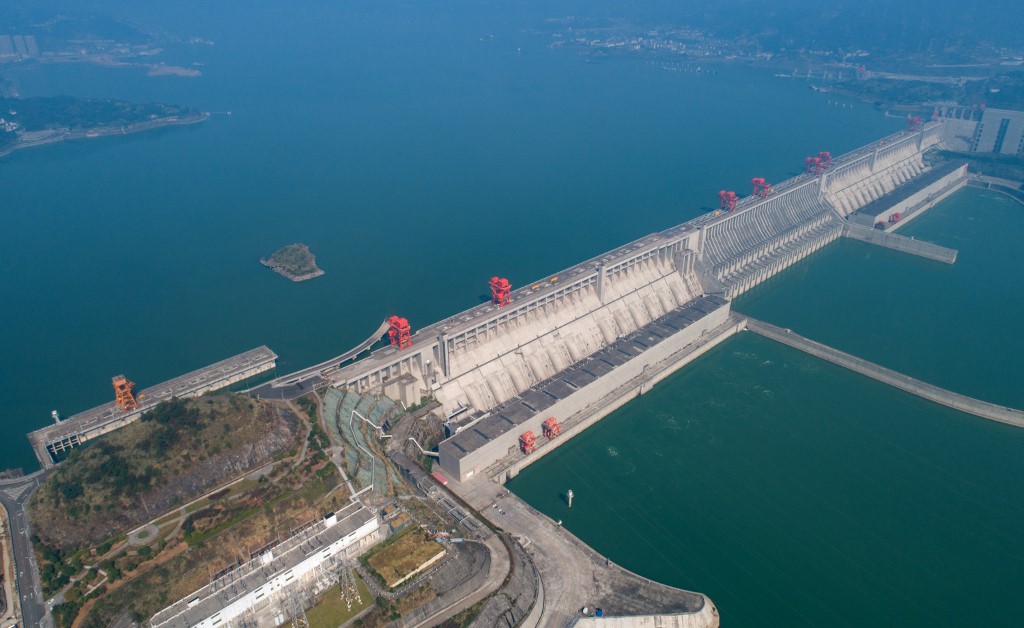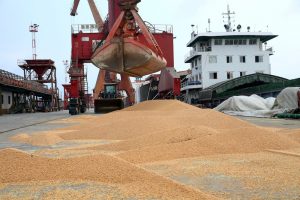(ATF) A flood alert has been raised near China’s famous Three Gorges Dam after the country suffered its heaviest rainfall in 70-80 years. Torrential rain has been causing chaos throughout China’s southwest this month, with many rivers overflowing and mass evacuations.
Heavy rains over the past three weeks have led to disasters being declared in 24 provinces and municipalities, especially near the upper reaches of the Yangtze River and the Three Gorges Dam.
This is reportedly the largest flooding since 1949 and has caused serious challenges to the world’s largest dam.
In Chongqing, authorities dredged 100,000 tonnes of silt overnight as levels rose.
Three Gorges is located in Sandouping Town, near Yichang City in Hubei Province in central China. It is 38 kilometres from the downstream Gezhouba Water Conservancy Project at the eastern end of the Three Gorges Reservoir.
Qijiang Online, the media outlet in the area, quoted Zhao Yunfa, deputy chief engineer of the overflow dispatch communications centre at the Three Gorges Project, who said: “The flood storage capacity of the Three Gorges is limited. Do not pin your hopes on the Three Gorges Dam.”
Zhang Shuguang, director of the Three Gorges Corporation Hub Management Bureau, also said that flood control measures for the entire Yangtze River Basin could not rely on a Three Gorges Dam to dominate the flood.
Construction on the dam began in 1994 and ended in 2006 after total investment of about 95.5 billion yuan (US$13.5 billion). The dam itself is 2,335 metres long and has an elevation of 185 metres. The second part of the scheme was a water diversion project. The dam has 32 turbine generator units and power generated by its hydropower station exceeded 100 billion kilowatt hours in 2018, a world record for a single facility.
The dam caused considerable controversy as it displaced over a million people and submerged large areas of the Qutang, Wu and Xiling gorges for about 600km – creating a deep reservoir that ocean-going freighters can navigate for 2,250km inland from Shanghai on the East China Sea to the inland city of Chongqing.
The heavy seasonal rain this month has swamped 24 provinces and municipalities in southern and central China, affecting more than 85 million people and causing damage put at 20.7 billion yuan so far.
Zhang warned that the largest flood since 1949 may occur this year, as rainfall in the dam’s catchment area – it has a reservoir up to 600km long – upstream of the dam poses a serious challenge.
Many plateaus in southwestern Sichuan Province have experienced heavy rain for 24 hours since June 16, and this was expected to continue in some parts of Sichuan until the 23rd (today).
Heavy rain in the upper reaches of the Qinhuai River in Jiangsu Province over the past few days totalled about 280 millimetres, which is equivalent to about 280 litres per square metre (or 11 inches on the old scale). This prompted authorities to issue strong rainfall warnings.
The State Flood Control and Drought Relief Headquarters, which is in charge of national flood control and drought relief work, said that from the 15th, floods had struck 852 provinces, autonomous regions, and municipalities in Guangdong, Guangxi, Hunan, Jiangxi, Guizhou, and Chongqing, causing 7,300 houses to collapse.
The Ministry of Water Resources said that 148 rivers had exceeded warning levels. For the first time in history the Chongqing section of the Qijiang River Basin issued a red warning, signifying a flood of more than 10 meters.
An estimated 400 million people live downstream of the Three Gorges Dam.
























